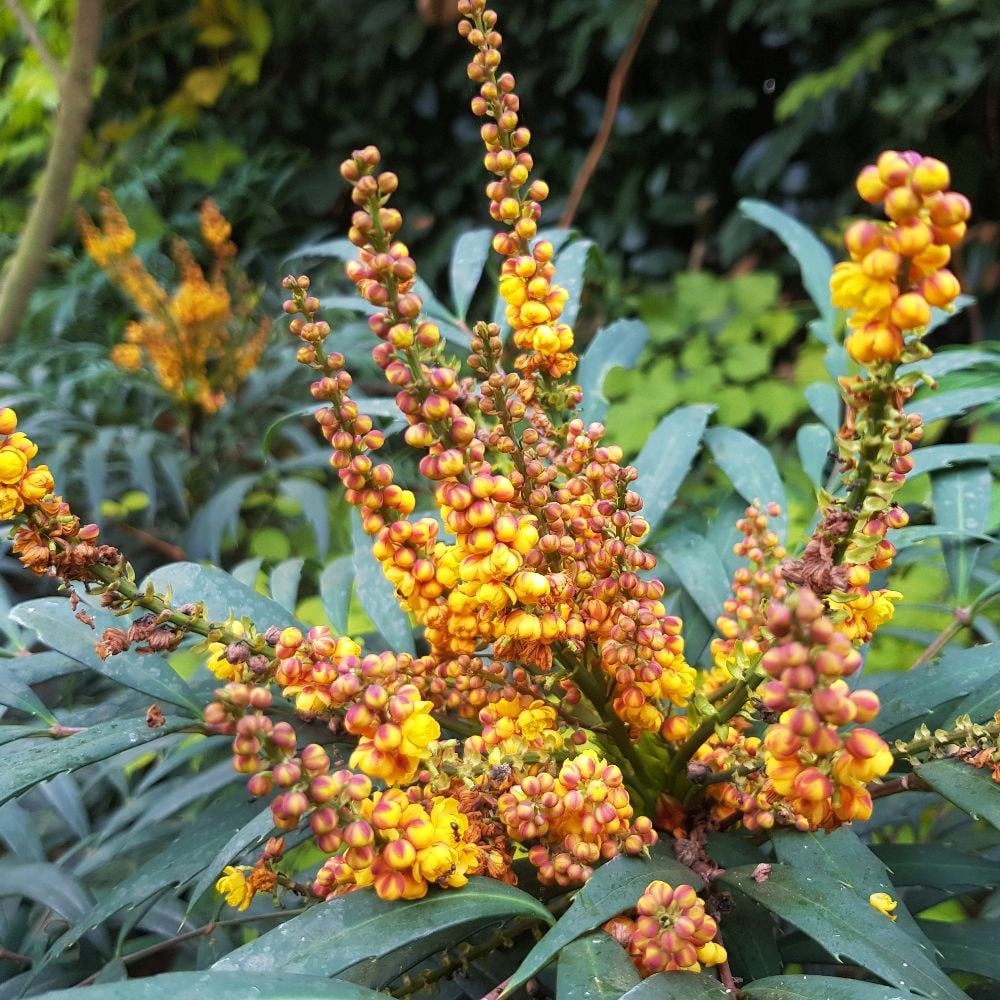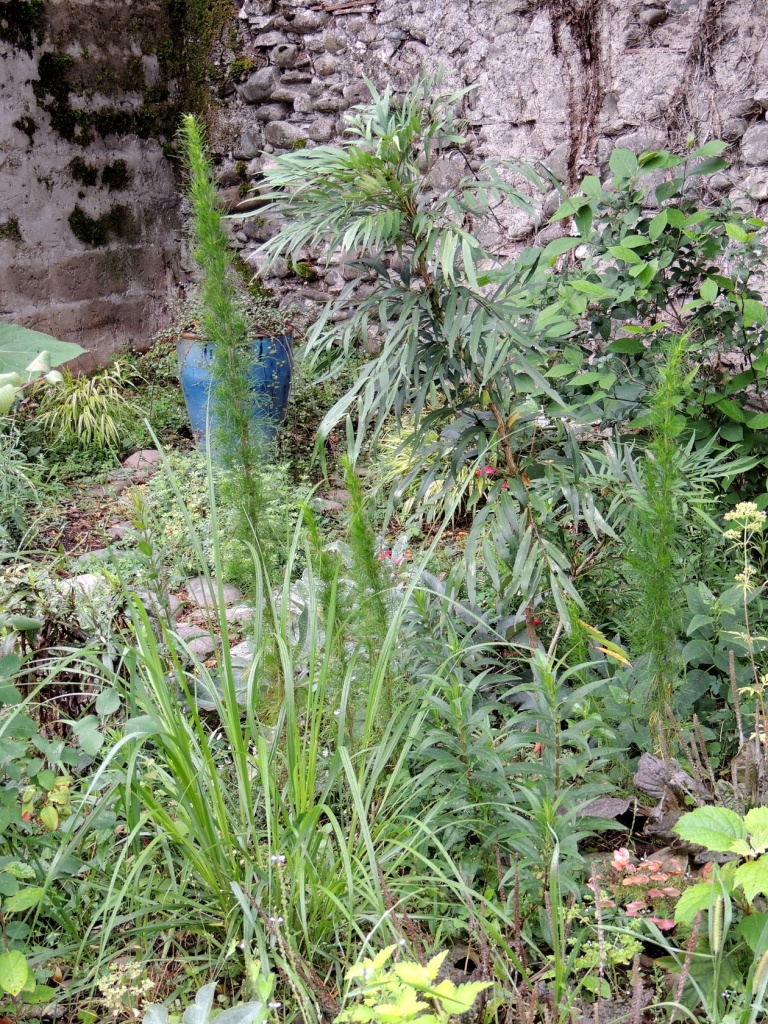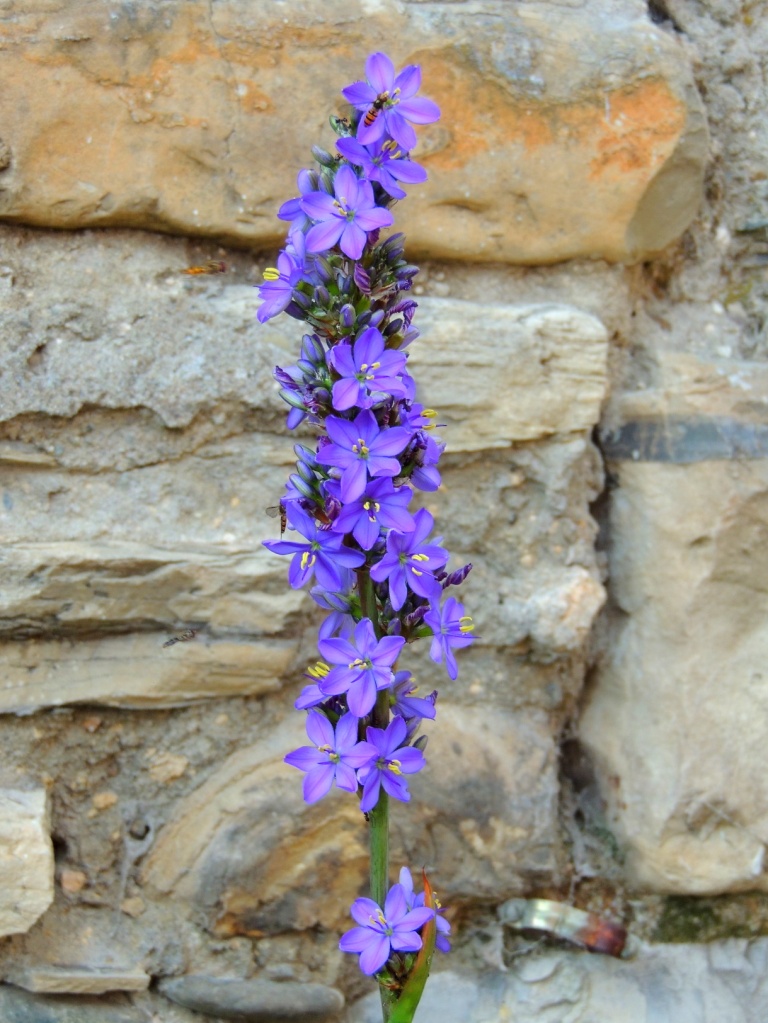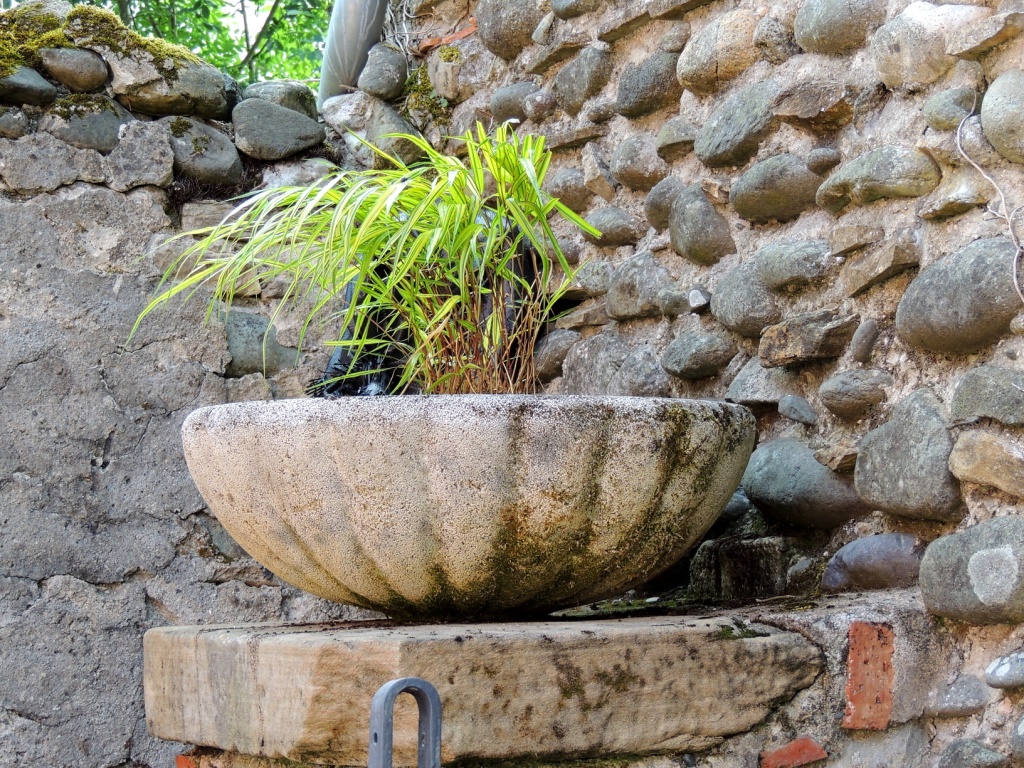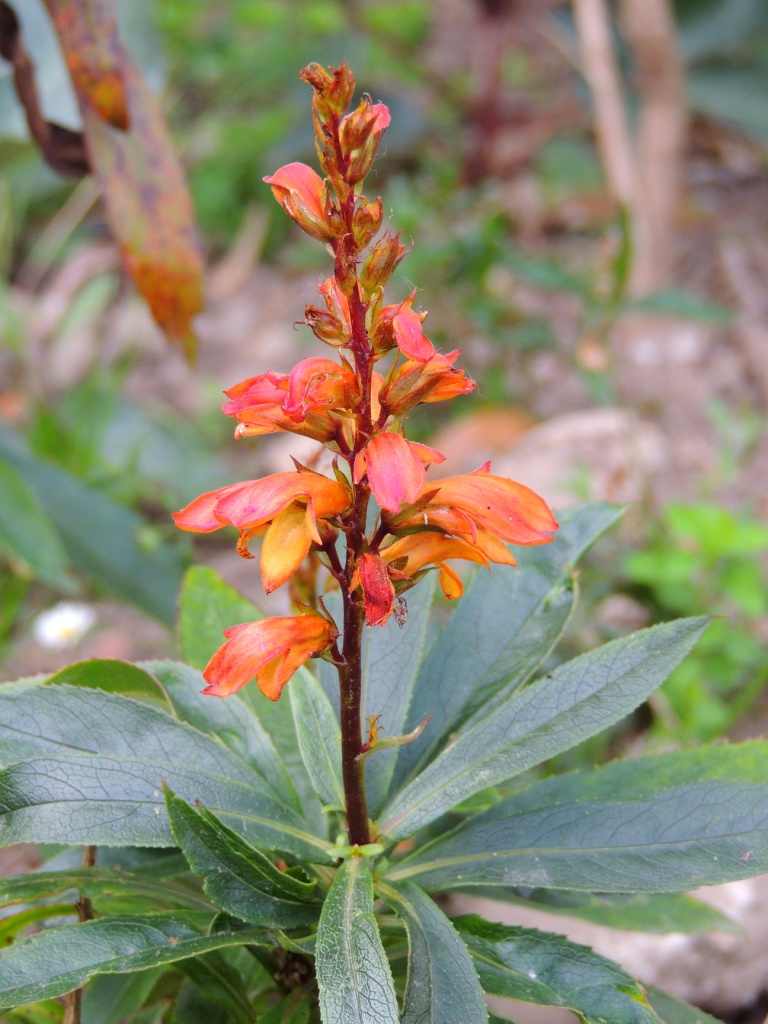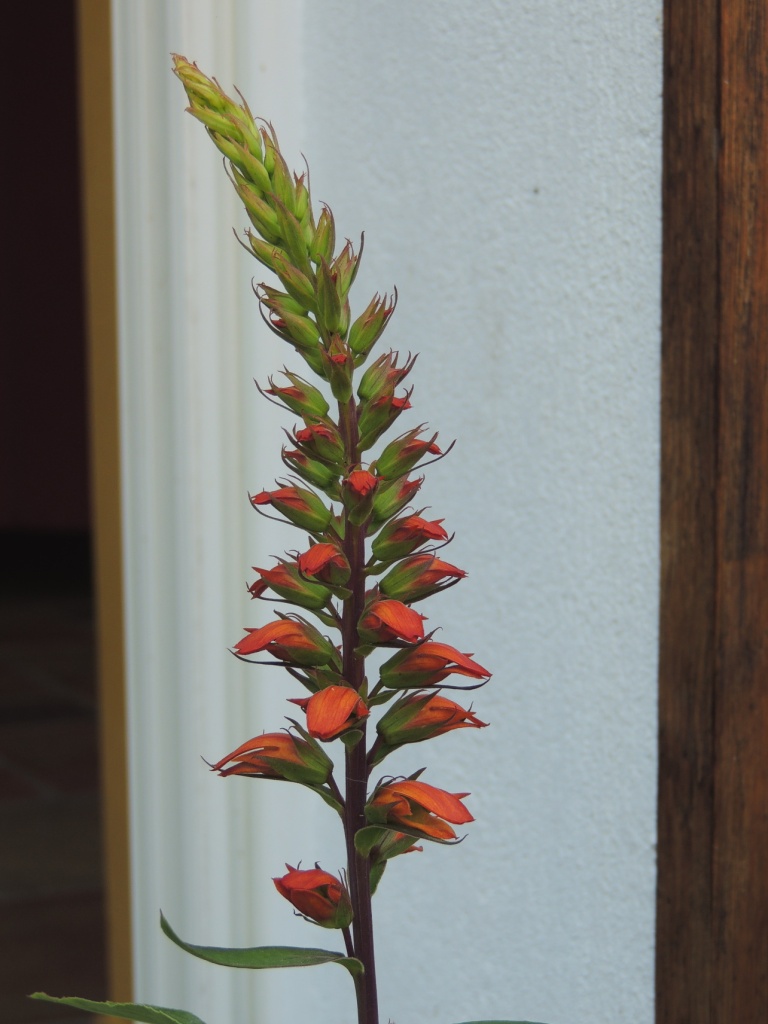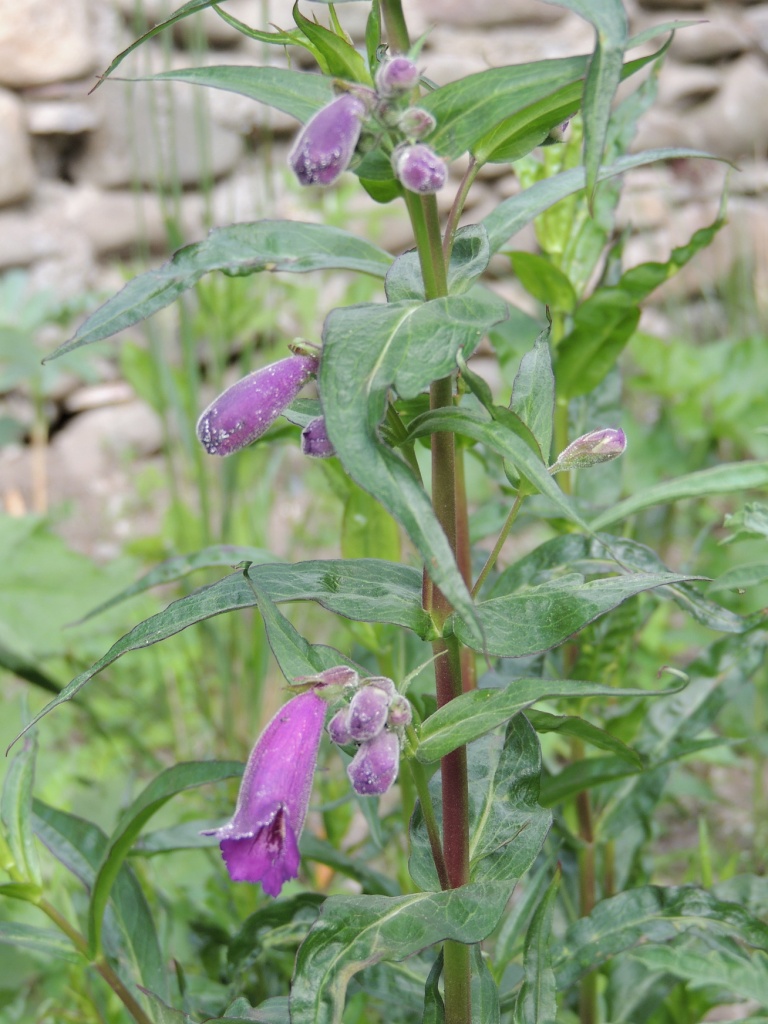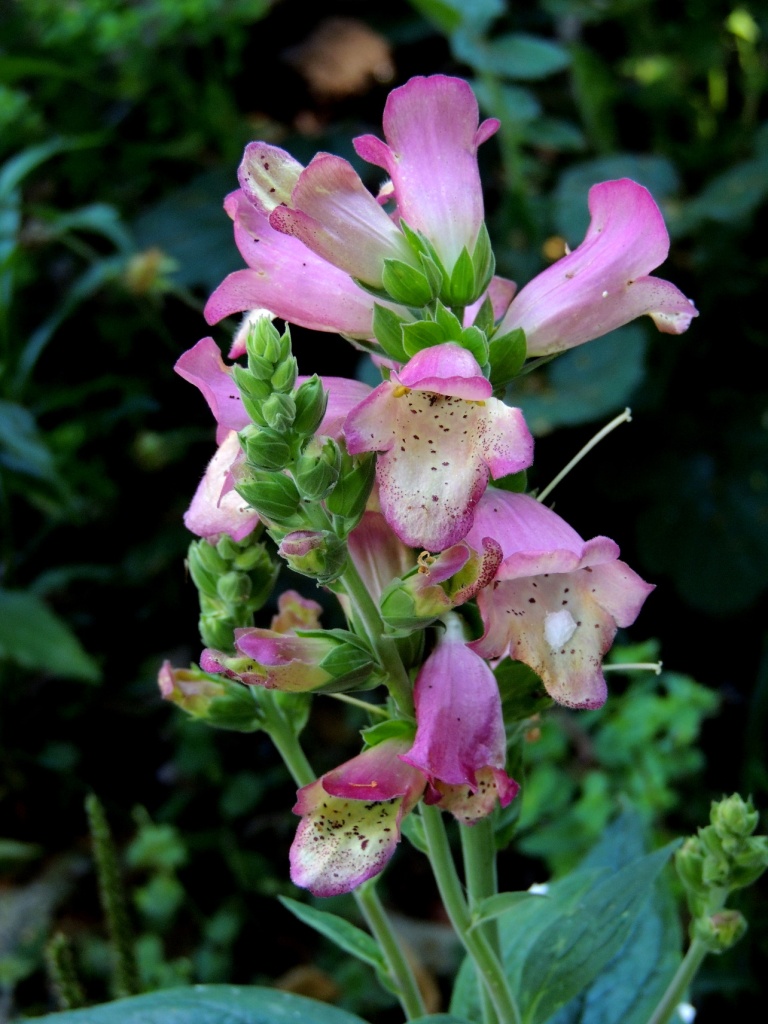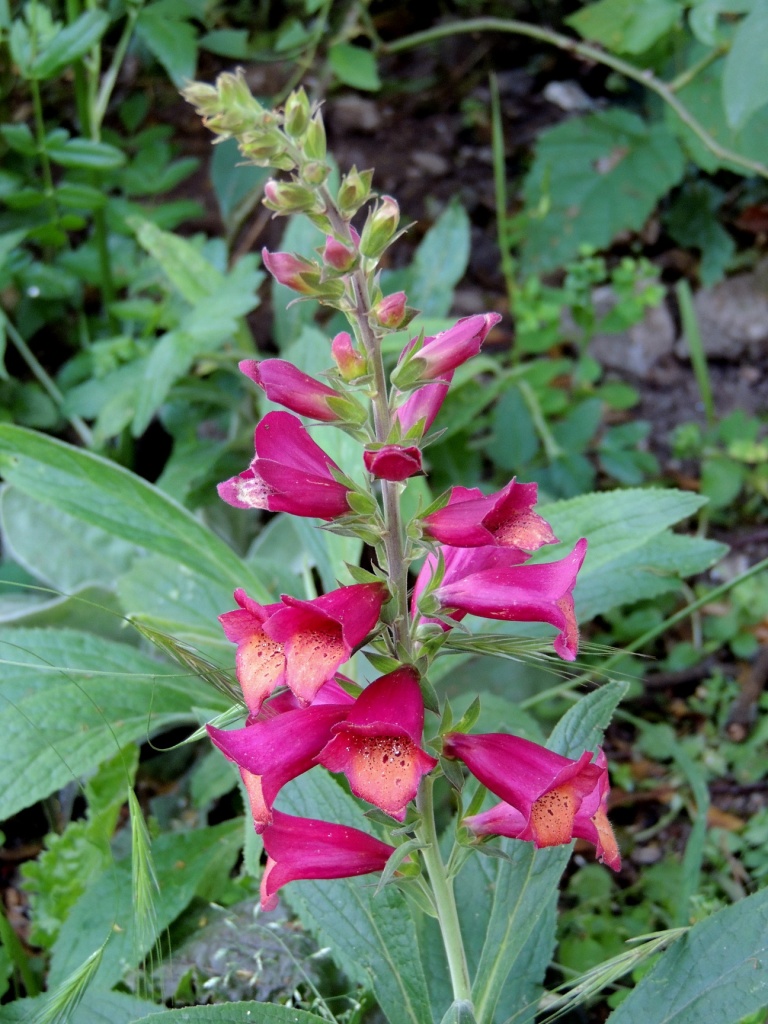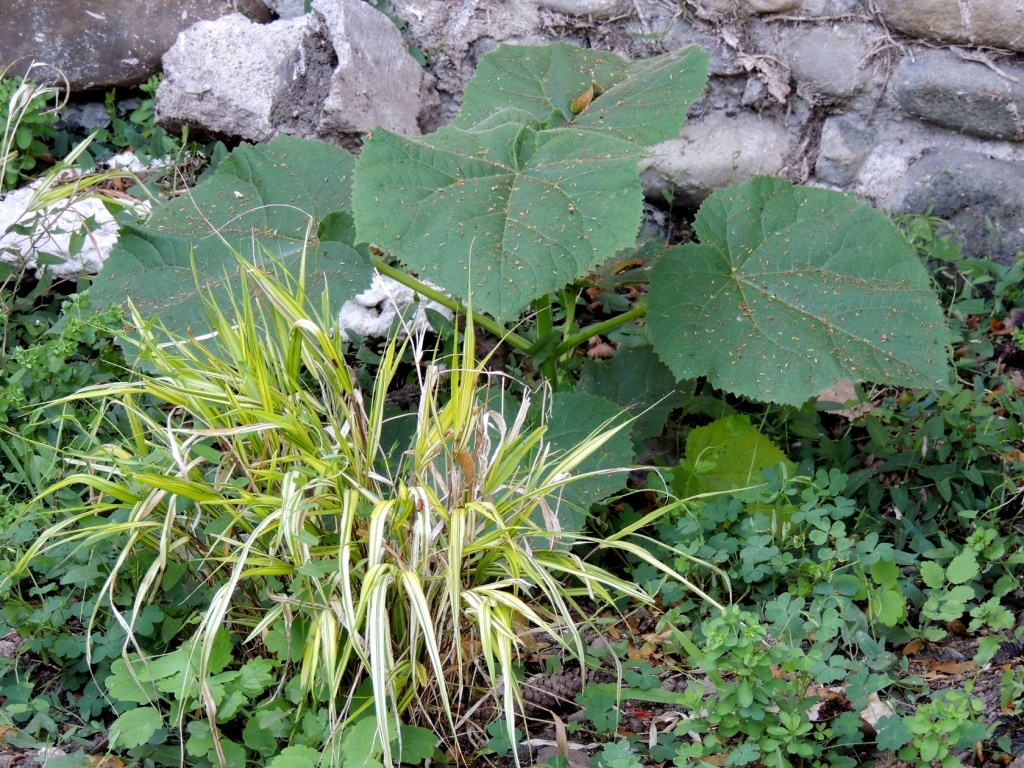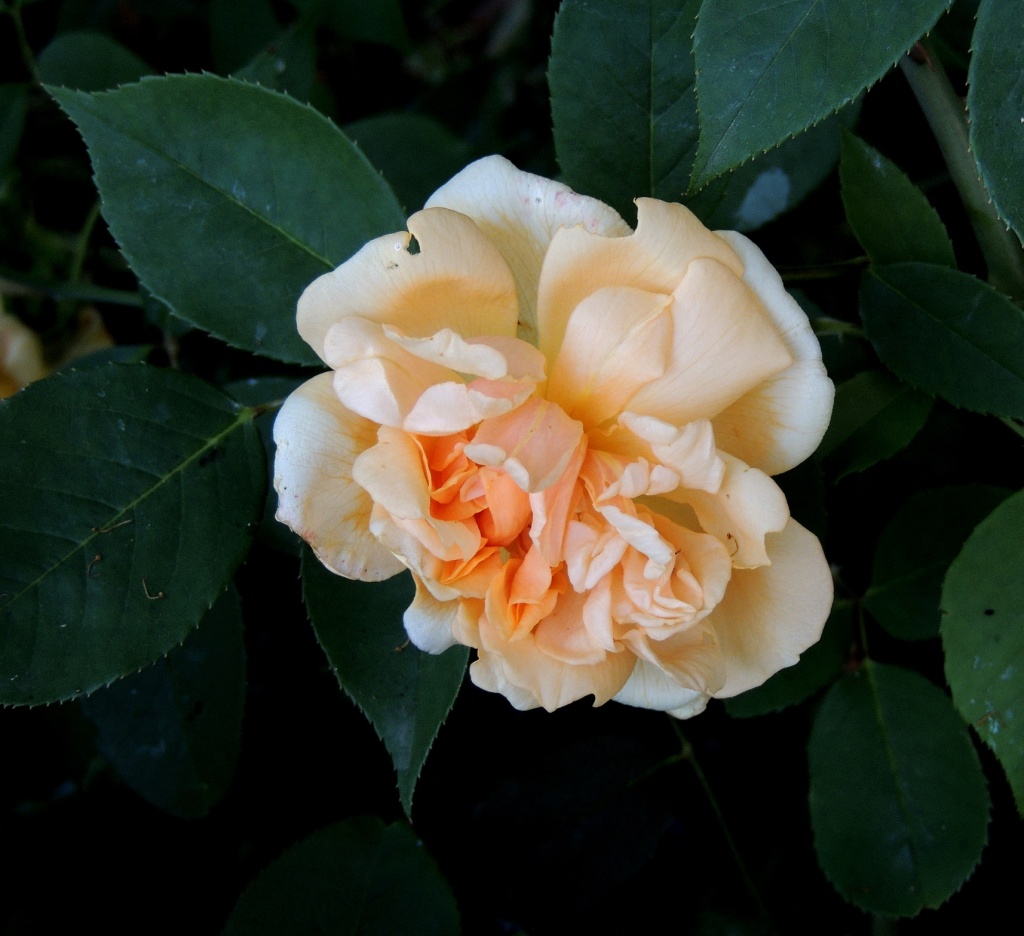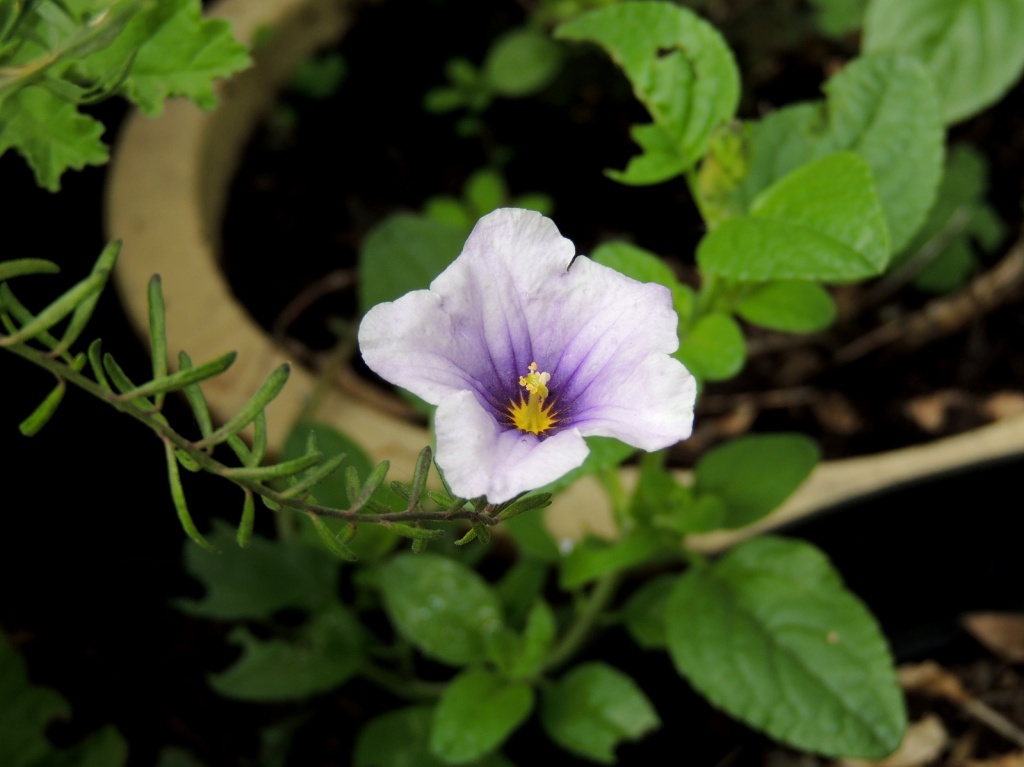
It has been a clear, sunny but very frosty period this January, repeated frost have really turned the soil as ‘hard as iron’, and expectant plants are stacking up in the courtyard waiting for the earth to warm enough. Now there’s a thing that I have discovered about the courtyard and that is, the power of the house to keep a metre distant from the walls above frost temperatures. Durr, you might say, but I wasn’t confident of that last winter (our first in the house) and this only applies to the south-facing wall, double durr. But this year I crowded slightly tender salvias, the pot of Isoplexis isabelliana ‘Bella’ that I got last year and some other more fragile pot inhabitants, right up against the window and the wall, and they are doing fine. I am keeping them fairly dry, and it should work through till Spring assuming we don’ get a -10c overnight. I also stuck a glass jamjar over my only surviving original remnant of Plectranthus argentatus ‘Silver Shield’ and that seems also to have worked. Too much self-doubt around.
The Salix gracilistyla ‘Mt Aso’ was a risky purchase last Spring, mainly guided by a mad desire for those cranberry, fluffy winter buds. It had a bit of a struggle in the Barn Garden, as being a willow, it really wants plenty of water, but I watched out for it, and it made it through the hot period. So the buds have been very slow and quite small, and I did think that maybe it had been too much of a gamble. But time will tell, and it’s got to be a good sign that it’s growing in size.

This Libertia ixioides ‘Goldfinger’ was a purchase years ago which had self-seeded all around in Tostat. Another last minute grab before the move has given me 4 tiny plants, which although toiling at times, have come through splendidly this Spring. It is such a lovely thing backlit, and for a smallish plant in height, is easily seen from afar, in a good way. It does produce sprays of small, white flowers in early summer, so there’s an all season bonus.

I am really pleased with this Schefflera taiwaniana, bought small last Spring. Although a little decked by the frost, it is sturdily growing away and is almost 75 cms when standing properly. Sadly, though a Scheffflera alpina, supposedly the hardiest, which I planted small at the end of the summer has been felled by the frosts, life expectancy not good. I probably should have waited to plant till the Spring.
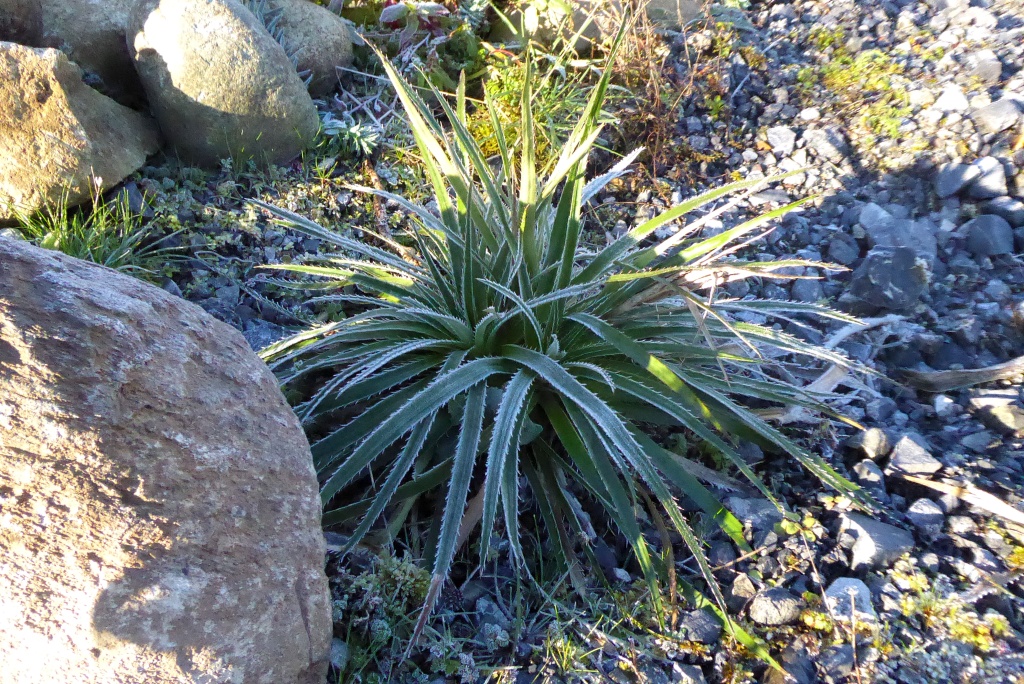
Another Tostat trusty, these are four tiny Eryngium eburneum, another last minute grab, and as I know they always struggle a little when small, I wasn’t surprised to see them looking in fine, if frosted elegantly, fettle. They should make really impressive clumps this year.

I bought this Anisodontea malvastroides for it’s bomb-proof qualities and I was really not much in love with it in Tostat. But cuttings took well, and came here to the stony, hot front garden and well, more hat being eaten by me. And I am even beginning to love it. It has flowered all the time since I planted it, got through the hot, dry period by waiting

Achillea crithmifolia is a low lying groundcover Achillea, with pleasing cream umbel flowers to about 10-15 cms high- it’s the foliage that I love, feathery, soft, ferny as well if you can be feathery and ferny, and that slightly clinical hospital scent that I actually like. It is doing a wonderful job growing around my Rosa mutabilis, and keeping all the bindwind and other undesirables at bay. It is seriously tough as old boots and will take pretty much anything the weather will throw at it. It might be considered a thug by some, but for now, I am more than happy with the imperial tendencies. There are no proper links to nurseries selling this plane in the UK, but it is appreciated here in France as a suppressant ground cover, but one piece grown on will give you endless supplies of plants over a season, so it is really worth it to give it a go, on your hottest, dryest, stoniest ground.















